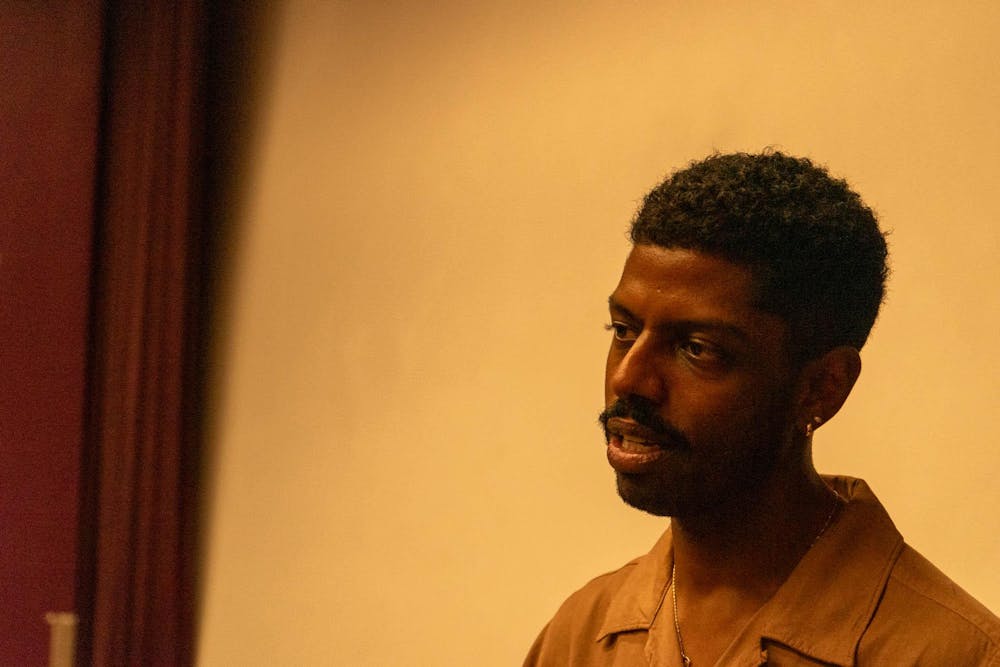For Philadelphia-born multimedia artist Devan Shimoyama, art is both story and exploration.
Shimoyama’s larger-than-life works of Black figures are awash in vibrant color. They often feature glimmering eyes made from costume jewelry, swaths of glitter and layers of texture.
“That’s something I want to do in my work — is to create images of and imagine something a little bit brighter,” Shimoyama said.
Last Thursday, Shimoyama spoke about his work in the Hanes Visiting Artist Lecture Series.
The series brings established and emerging contemporary artists to campus several times each semester.
According to event organizer and assistant art professor Martín Wannam, the lectures feature artists from a broad range of geographies and mediums and provide opportunities for undergraduate and graduate students to learn more about different paths of creating art.
“I think it’s important to understand different artists and what they’re doing, and for what, and why and where they’re coming from as a way to expand our knowledge and understanding of art making and culture itself because I think that art is basically a production of culture as well,” Wannam said.
Shimoyama’s art explores worlds — of queerness, of the Baptist Black women who raised him, of childhood cartoons and early 2000s rhythm and blues — that simultaneously collide and harmoniously coexist. In fact, revealing that harmony is a key aspect of Shimoyama’s work.
“Mighty Mighty: The Barbershop Project,” one of Shimoyama’s recent works, navigates the masculinity of a Black barbershop from a queer perspective.



